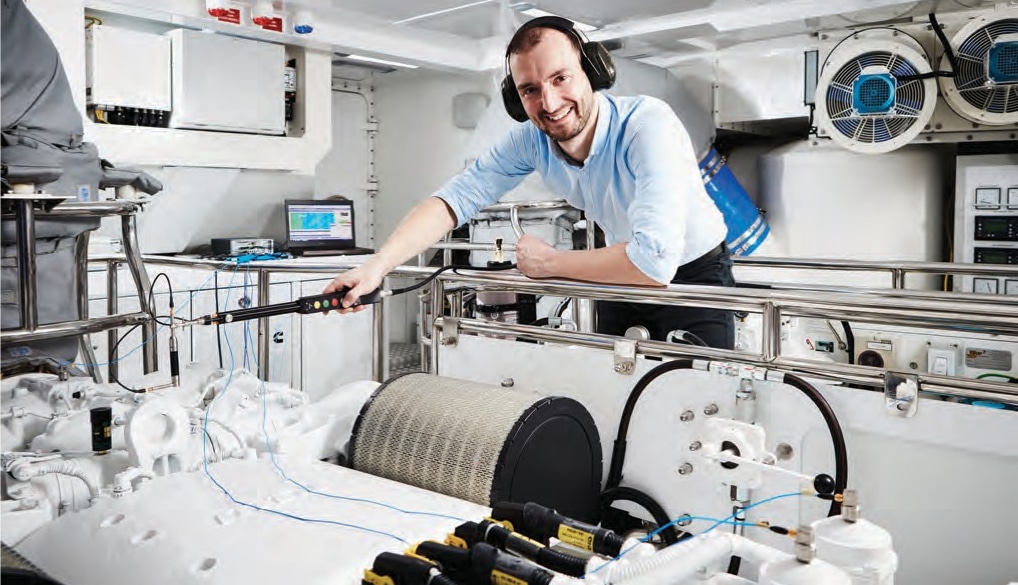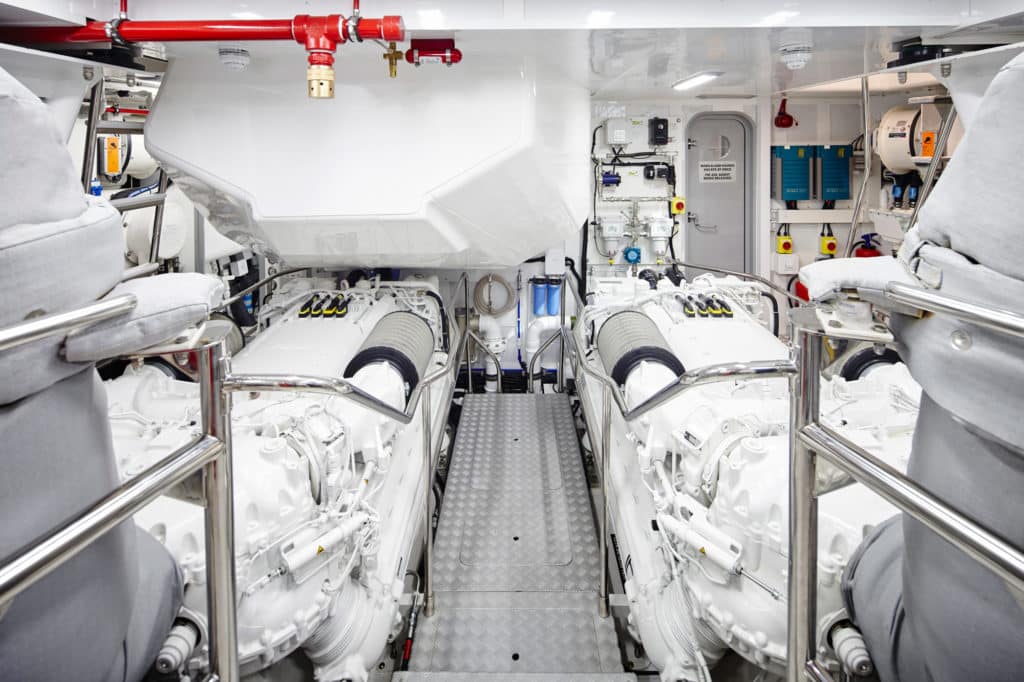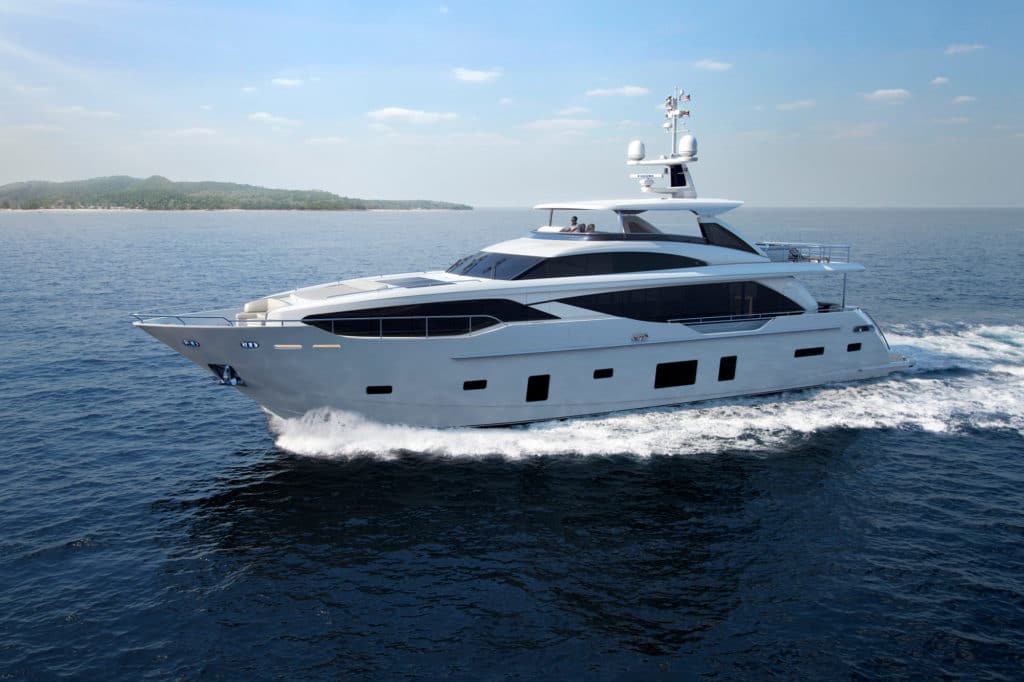
I work alongside the naval architects, but I am basically a one-man ‘noise, vibration and harshness’ department. Harshness sounds more technical than ‘unpleasantness’ but it means the same thing. Sound and vibration can be measured scientifically, but are also very subjective. You want your yacht to feel smooth and quiet. So do we.
I was the Princess coordinator on a government-funded research project into reactive noise cancelling, and came up with the test rig we now use to analyze the panels used in your boat’s structure, and the effectiveness of the insulation materials. It’s basically a 4.5-tonne concrete box with walls 25cm thick and speakers inside which can produce 140dB. That’s a lot: ‘threshold of pain’ is a technical term. We place the panel on top and use an intensity probe to produce a 3D map of the noise and vibrations. We can use it to show the naval architects exactly how a panel vibrates, so they can work out where stiffening is needed. You wouldn’t guess that it makes a difference whether you place the Thinsulate over or under the rubber, or that it matters which way up the foam is, but it does.
One of our projects involved active vibration cancelling for an onboard generator, which reduced vibration by 60dB. Trust me, that is huge. We can’t offer it to owners yet, but we now have the knowledge, and you never know, the day might come. It’s a very sexy technology.

My main task now is to develop Princess’s NVH capabilities and make sure our fleet is the best on the market. In the past, a vibration problem would mean changing propellers, shafts, thrust bearings and engine mounts in an effort to isolate the issue. With the new tools I have developed, we are able to pinpoint the root cause and deal with it. A washer weighing just 40g precisely-placed on an engine’s flywheel can balance the irregularity and cancel engine vibration. At 1,800rpm a 40g washer exerts 50kg of centrifugal force! We set ourselves very high targets now, and are pushing our suppliers to try to do better.
I studied in Cracow, and came to Cranfield University under the EU’s Erasmus exchange scheme. I arrived at Princess in 2013, and have barely sat down. NVH is a very broad discipline, and once the engineers understood what I could do they started asking me to be everywhere. The Princess 30M is my baby. I believe it’s the first yacht of its class to be designed from the start with NVH in mind, and I’m confident that it’s the quietest.

When I’m not working I’m into motorcycles and music. I was playing guitar long before I started studying sound, so I can lose myself in the music without analyzing it in terms of harmonics, vibration and frequencies. At least I think I can. It probably helps that I play heavy metal.
To learn more about Princess Yachts, visit the Princess Passport.




